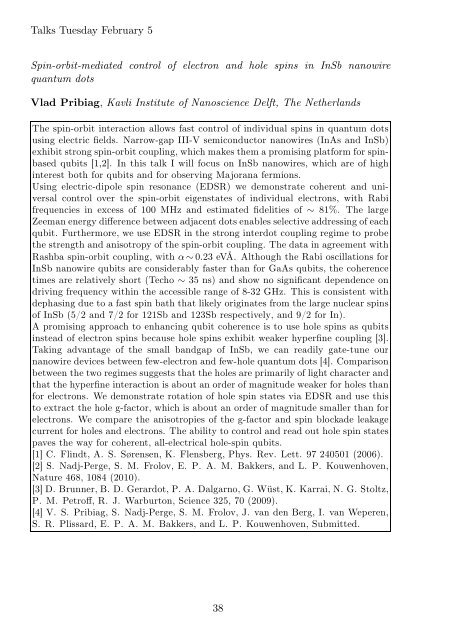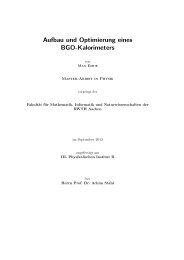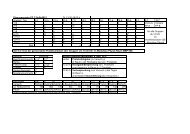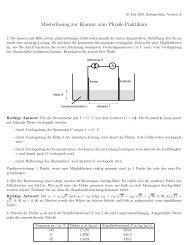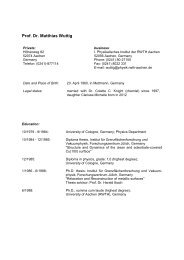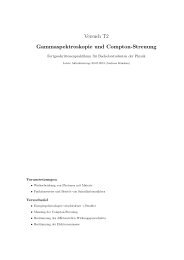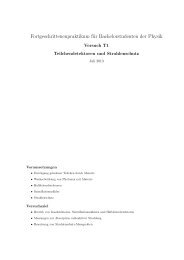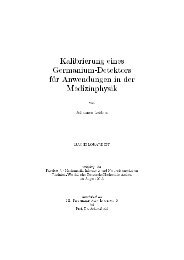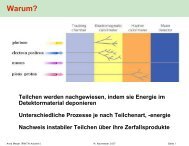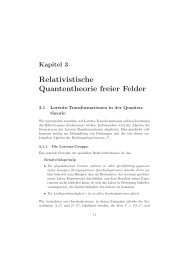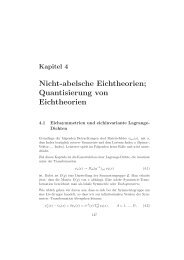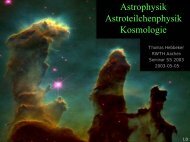Workshop book - Physikzentrum der RWTH Aachen - RWTH Aachen ...
Workshop book - Physikzentrum der RWTH Aachen - RWTH Aachen ...
Workshop book - Physikzentrum der RWTH Aachen - RWTH Aachen ...
Create successful ePaper yourself
Turn your PDF publications into a flip-book with our unique Google optimized e-Paper software.
Talks Tuesday February 5<br />
Spin-orbit-mediated control of electron and hole spins in InSb nanowire<br />
quantum dots<br />
Vlad Pribiag, Kavli Institute of Nanoscience Delft, The Netherlands<br />
The spin-orbit interaction allows fast control of individual spins in quantum dots<br />
using electric fields. Narrow-gap III-V semiconductor nanowires (InAs and InSb)<br />
exhibit strong spin-orbit coupling, which makes them a promising platform for spinbased<br />
qubits [1,2]. In this talk I will focus on InSb nanowires, which are of high<br />
interest both for qubits and for observing Majorana fermions.<br />
Using electric-dipole spin resonance (EDSR) we demonstrate coherent and universal<br />
control over the spin-orbit eigenstates of individual electrons, with Rabi<br />
frequencies in excess of 100 MHz and estimated fidelities of ∼ 81%. The large<br />
Zeeman energy difference between adjacent dots enables selective addressing of each<br />
qubit. Furthermore, we use EDSR in the strong interdot coupling regime to probe<br />
the strength and anisotropy of the spin-orbit coupling. The data in agreement with<br />
Rashba spin-orbit coupling, with α∼ 0.23 eVÅ. Although the Rabi oscillations for<br />
InSb nanowire qubits are consi<strong>der</strong>ably faster than for GaAs qubits, the coherence<br />
times are relatively short (Techo ∼ 35 ns) and show no significant dependence on<br />
driving frequency within the accessible range of 8-32 GHz. This is consistent with<br />
dephasing due to a fast spin bath that likely originates from the large nuclear spins<br />
of InSb (5/2 and 7/2 for 121Sb and 123Sb respectively, and 9/2 for In).<br />
A promising approach to enhancing qubit coherence is to use hole spins as qubits<br />
instead of electron spins because hole spins exhibit weaker hyperfine coupling [3].<br />
Taking advantage of the small bandgap of InSb, we can readily gate-tune our<br />
nanowire devices between few-electron and few-hole quantum dots [4]. Comparison<br />
between the two regimes suggests that the holes are primarily of light character and<br />
that the hyperfine interaction is about an or<strong>der</strong> of magnitude weaker for holes than<br />
for electrons. We demonstrate rotation of hole spin states via EDSR and use this<br />
to extract the hole g-factor, which is about an or<strong>der</strong> of magnitude smaller than for<br />
electrons. We compare the anisotropies of the g-factor and spin blockade leakage<br />
current for holes and electrons. The ability to control and read out hole spin states<br />
paves the way for coherent, all-electrical hole-spin qubits.<br />
[1] C. Flindt, A. S. Sørensen, K. Flensberg, Phys. Rev. Lett. 97 240501 (2006).<br />
[2] S. Nadj-Perge, S. M. Frolov, E. P. A. M. Bakkers, and L. P. Kouwenhoven,<br />
Nature 468, 1084 (2010).<br />
[3] D. Brunner, B. D. Gerardot, P. A. Dalgarno, G. Wüst, K. Karrai, N. G. Stoltz,<br />
P. M. Petroff, R. J. Warburton, Science 325, 70 (2009).<br />
[4] V. S. Pribiag, S. Nadj-Perge, S. M. Frolov, J. van den Berg, I. van Weperen,<br />
S. R. Plissard, E. P. A. M. Bakkers, and L. P. Kouwenhoven, Submitted.<br />
38


